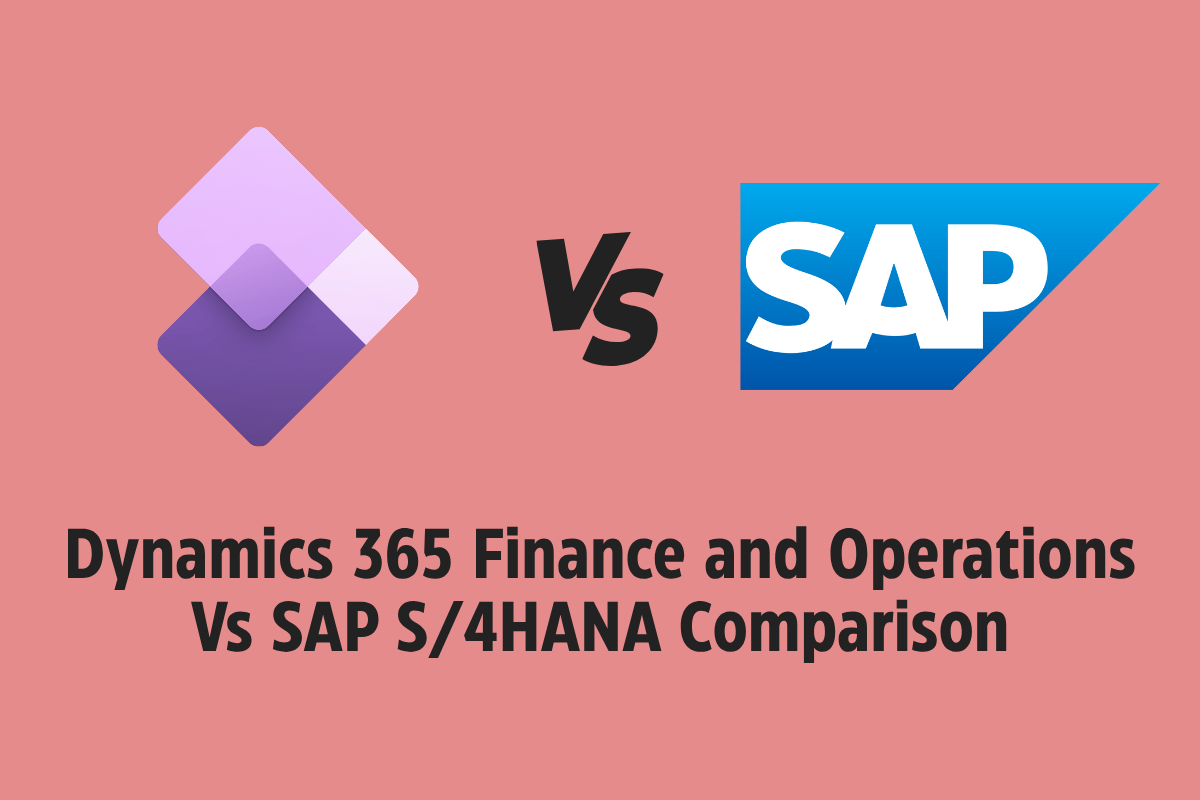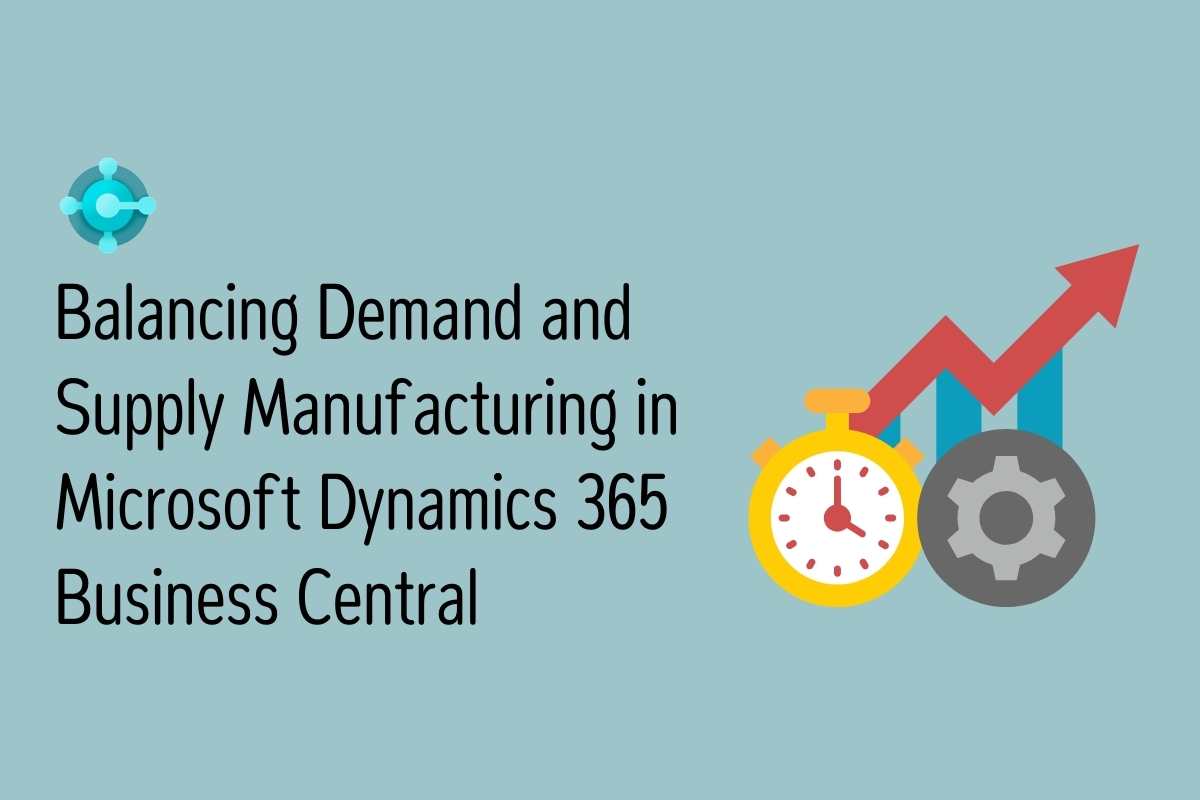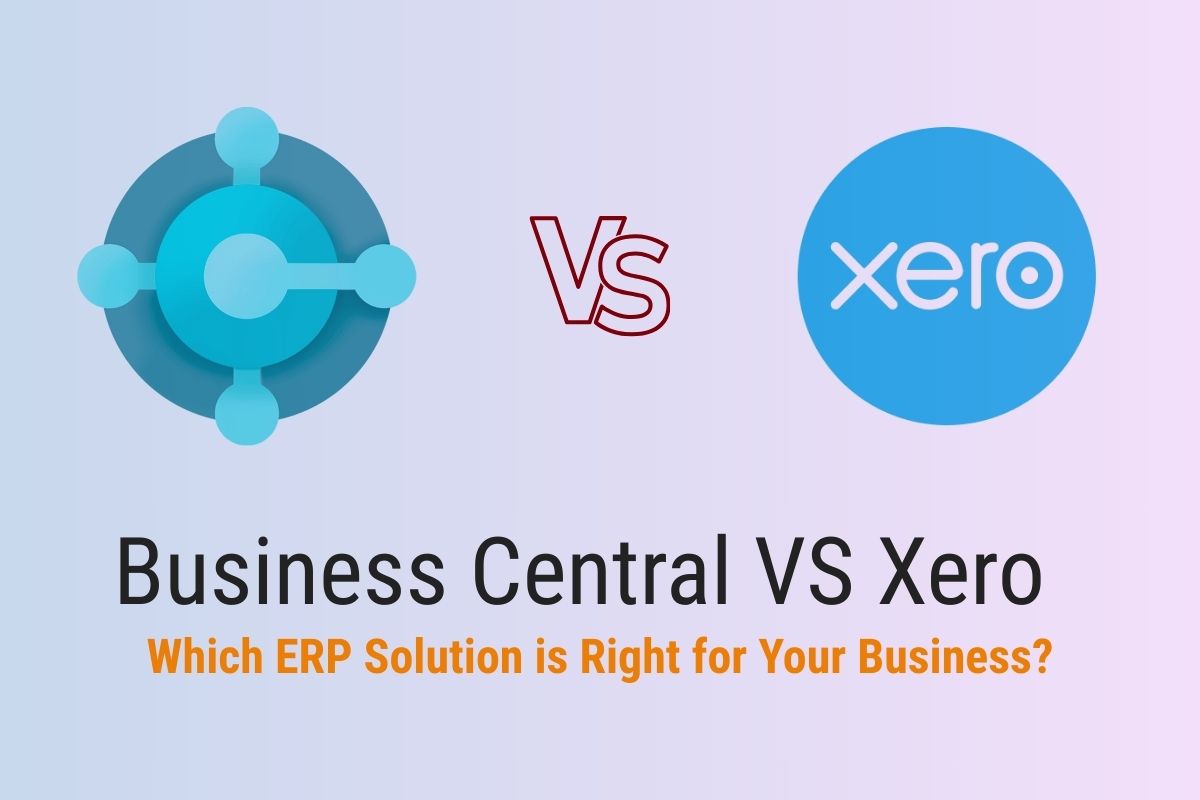When I look at ERP solutions for any enterprise, two names often stand out: Microsoft Dynamics 365 Finance and Operations and SAP S/4HANA. Both are heavyweights in the ERP market.
In this Microsoft Dynamics 365 vs SAP S/4HANA comparison, I’ll explore how each can tackle the common challenges businesses face today.
They promise to streamline operations, boost efficiency, and help make smarter decisions based on data. But the real question is: which one fits your organisation best?
In this post, I’ll compare Microsoft Dynamics 365 Finance and Operations with SAP S/4HANA. I’ll explore how each can tackle the common challenges businesses face today.
What ERP Really Means for Your Business
ERP systems are the backbone of modern business. They bring together many core processes under one roof.
From supply chain and inventory management to asset oversight and financial operations, ERP systems like Dynamics 365 and SAP S/4HANA help you run things smoothly.
They slot into your existing technology stack, making the most of what you already have. The right ERP can automate routine jobs, improve financial controls, and give you a clear, real-time picture of your business.
With advanced analytics and business intelligence, you can spot trends early and make decisions that count.
Whether you want to tighten your supply chain, sharpen financial management, or get more from your assets, ERP systems give you the tools to stay competitive.
Every business is different, so choosing the right ERP means picking one that fits your unique needs and challenges.
Unlocking the right ERP can transform your business from the ground up—giving you clarity, control, and confidence.
Navigating Today’s Tough Business Landscape
Business today is fast and complex. I see organisations facing constant pressure to:
- Boost Operational Efficiency: Customers want more, and competition is fierce. You need to run your supply chain, finances, and daily operations lean and mean.
- Stay Agile: Markets shift quickly. You must pivot fast, handle supply chain hiccups, and meet changing customer demands.
- Make Data Work for You: Managing growing data volumes manually is impossible. You need real-time insights to make smart calls.
- Keep Compliance Tight: Rules change all the time. Staying compliant across borders is crucial to avoid costly fines.
- Deliver Great Customer Experiences: Customers expect smooth, personalised interactions everywhere—online, in-store, or on the phone.
On top of this, your complex business processes get more challenging every day.
If you’re wrestling with these challenges, the right ERP isn’t just helpful—it’s essential. Microsoft Dynamics 365 Finance and Operations and SAP S/4HANA both offer industry-specific tools to meet these needs head-on.
ERP systems like Dynamics 365 and SAP S/4HANA are used across various industries to address unique sector needs, providing tailored solutions for manufacturing, retail, finance, healthcare, and more.
Choosing the right ERP means choosing a partner that understands your sector and can grow with you.
Successful ERP implementation also depends on high user adoption rates, which are driven by intuitive design, seamless integration, and ease of use.
The right ERP gives you the edge to turn challenges into opportunities.
SAP S/4HANA: Power for Large-Scale Operations
SAP S/4HANA is a heavyweight ERP, built on the SAP HANA platform and evolved from SAP ERP.
It’s designed for large enterprises and big, multinational organisations with complex operations and global operations requirements.
It’s strong in industry-specific solutions, serving sectors like manufacturing and retail, and offers robust industry specific functionalities to address unique sector needs.
It handles vast product catalogues and detailed workflows with ease.
Key strengths include manufacturing management, production planning, and product lifecycle control.
It supports real-time scheduling and resource allocation, tailored to your industry’s needs.
In financial management, finance sap provides advanced capabilities for financial institutions, including real-time analytics, risk analysis, and regulatory compliance.
When implementing SAP S/4HANA, I always stress the importance of checking your existing tech stack. Compatibility and smooth integration are vital.
The implementation process can be complex, requiring careful planning and effective project management to ensure a successful deployment.
Extensive customization is often needed to tailor SAP S/4HANA to specific business needs, especially for large enterprises or industry-specific processes.
To fully leverage the system’s capabilities, additional add-ons may be required for certain industries.
What I Like About SAP S/4HANA:
-
Broad Functionality: Covers finance, supply chain, procurement, HR, and more. It’s packed with features for sectors like manufacturing and healthcare. Its accounts receivable tools automate invoicing and revenue collection globally.
-
Real-Time Data & Reporting Capabilities: The in-memory SAP HANA database processes data instantly, enabling up-to-date insights and advanced reporting capabilities for customizable, real-time reporting at your fingertips.
-
Robust Data Management: SAP S/4HANA offers strong data management features that ensure accurate analytics and reporting by efficiently organizing, storing, and integrating enterprise data.
-
Service Delivery Insight: Tools to analyse and optimise service operations. Great for companies with field service or subscription models.
-
Global Reach: SAP supports localisation for multinational operations across many countries.
What to Watch Out For:
-
High Costs and Complex Pricing: Implementation can be expensive and complicated. SAP S/4HANA uses a more complex pricing structure, with costs depending on users, modules, and customisation. This can be a barrier for mid-sized firms.
-
Complexity and Learning Curve: The system’s depth means a steep learning curve. SAP S/4HANA often requires significant technical expertise for customization and navigation. You’ll need dedicated people and training to get the most out of it.
-
Slow Time to Value: Implementations take time. Returns on investment might not be immediate, which can test patience.
SAP S/4HANA is ideal if you need a powerful, comprehensive system and are ready to invest in it.
Choosing SAP means opting for strength and scale, with a commitment to long-term transformation.
Microsoft Dynamics 365 Finance and Operations: Flexible and Integrated
Dynamics 365 Finance Operations is a cloud-first ERP that scales well for small, mid-market, and large businesses. Learn more about the implementation and license costs of Microsoft Dynamics 365 Business Central.
It fits neatly within the Microsoft ecosystem—think Office 365, Azure, and Power Platform—making integration with existing systems a breeze.
The Power Platform lets you build custom apps, automate workflows, and tap into real-time analytics.
Professional services automation modules are also available, supporting service-oriented industries with project and resource management.
The automation capabilities within Dynamics 365 streamline financial tasks like invoice management and cash flow forecasting. This saves time and reduces errors.
For organizations with unique requirements, tailored solutions are available to address specific business needs and ensure flexibility.
The Upsides of Dynamics 365 F&O:
- Powerful ERP Solution: Dynamics 365 F&O is one of the most powerful ERP solutions available, offering comprehensive, scalable, and robust tools to streamline business processes across financial management, supply chain, and analytics.
- Cost-Effective: Flexible, consumption-based pricing makes it affordable for many businesses.
- Scalable and Flexible: It adapts as your business grows or changes. Supports various business models and industries.
- Seamless Microsoft Integration: Works smoothly with Power BI, PowerApps, and Microsoft 365, and is fully compatible with other Microsoft solutions. Perfect if you’re already using Microsoft tools.
- Cloud-Native: Offers flexibility, lower IT overhead, and faster returns compared to on-premise systems.
- Intuitive Interface: Features an intuitive interface that is easier to use than many ERPs, speeding up adoption and improving efficiency.
Struggling with Disconnected Systems?
Get finance and operations working as one with D365.
Some Challenges:
- Less Depth in Certain Areas: May not offer the same deep industry-specific features as SAP, especially for complex sectors like manufacturing or public services.
- Customisation Costs: While flexible, complex or extensive customization can require significant expertise and higher costs, especially when tailoring the system for large enterprises or industry-specific processes.
- Data Migration: Moving data from old systems can be tricky, especially if those systems are heavily customised.
Dynamics 365 F&O suits businesses that want a flexible, integrated, and cost-effective ERP that grows with them.
It’s the smart choice if you value ease of use and Microsoft integration.
Financial Management: Controlling Costs and Driving Growth
Financial management sits at the heart of any successful enterprise resource planning (ERP) system.
It’s not just about keeping the books balanced—it’s about gaining the insights and control needed to drive growth and make smarter decisions.
Microsoft Dynamics 365 Finance and Operations (D365 F&O) delivers a robust financial management suite, offering real-time insights, automated workflows, and seamless integration with the broader Microsoft ecosystem.
This means your financial processes—from accounts receivable to cash flow management—are streamlined and connected, helping you improve operational efficiency and reduce manual errors.
On the other hand, SAP S/4HANA stands out with its deep industry-specific capabilities in financial management.
It provides advanced analytics, comprehensive treasury management, and sophisticated financial planning tools tailored for complex business environments.
These features are especially valuable for larger enterprises with intricate financial operations and regulatory requirements.
When evaluating ERP systems, it’s crucial to consider your organization’s specific financial management needs.
If you’re looking for a cost-effective solution that integrates smoothly with your existing Microsoft technology stack, Dynamics 365 offers a compelling option.
Its automation and real-time data help you control costs, optimize cash flow, and support business growth.
For organizations requiring advanced analytics and industry-specific financial controls, SAP S/4HANA’s capabilities may be the better fit.
Ultimately, the right ERP system empowers your finance team to move beyond routine tasks and focus on strategic initiatives that drive your business forward.
Manufacturing Management: Streamlining Production and Operations
Manufacturing management is a cornerstone of operational excellence for businesses that rely on efficient production and supply chain processes.
Microsoft Dynamics 365 Supply Chain Management offers a comprehensive solution for managing manufacturing operations, with features like real-time analytics, automated workflows, and seamless integration with other Microsoft products.
This enables businesses to optimize production planning, inventory management, and logistics visibility, ensuring that every step of the manufacturing process is connected and efficient.
SAP S/4HANA brings deep industry-specific capabilities to manufacturing management, including advanced analytics, product lifecycle management, and quality management.
Its robust platform is designed to handle complex production environments, making it a strong choice for organizations with intricate manufacturing requirements and a need for detailed process control.
When evaluating ERP systems, it’s important to assess your manufacturing management needs—such as production scheduling, inventory control, and supply chain optimization.
Dynamics 365 F&O provides a flexible, user-friendly solution that helps businesses improve operational efficiency, reduce costs, and enhance customer satisfaction through better visibility and automation.
SAP S/4HANA, with its advanced analytics and industry focus, is well-suited for larger enterprises seeking comprehensive control over their manufacturing processes.
Choosing the right ERP system for manufacturing management can help your business streamline operations, respond quickly to market changes, and deliver high-quality products to your customers.
Business Intelligence: Turning Data into Action
Business intelligence is now a must-have in ERP. Both Dynamics 365 and SAP S/4HANA come with strong BI tools like Power BI.
These tools deliver real-time analytics, sharp reporting, and clear visualisations. They help you track various business processes, including supply chains, customer relationship management, and finances with ease.
With BI built into your ERP, you spot issues early and act fast. Whether it’s financial performance, customer behaviour, or inventory levels, BI keeps you agile.
The right BI tools turn your data into a competitive advantage. Other ERP solutions also offer BI capabilities, but Dynamics 365 and SAP S/4HANA stand out for their advanced features.
Tackling Today’s Challenges with Dynamics 365 Finance and Operations
Dynamics 365 Finance and Operations shines in warehouse management. It tracks inventory, manages orders, and supports complex warehouse models.
Its logistics visibility lets you monitor shipments in real time. Transportation management streamlines planning and boosts efficiency.
It also covers procurement processes and manufacturing processes, making it ideal for businesses with complex operations.
What sets it apart is the user-friendly interface, integrated analytics, and cloud-first design. These features help you transform digitally with minimal fuss.
Additionally, Dynamics 365 F&O offers industry specific functionalities to address the unique needs of different sectors.
This makes Dynamics 365 F&O especially suitable for large enterprises with complex operational needs.
Why I Recommend Dynamics 365 Finance and Operations
If you want to future-proof your business, consider the Dynamics 365 vs SAP S/4HANA choice carefully.
Dynamics 365 offers a cost-effective, scalable, and user-friendly platform. It integrates smoothly with existing systems, ensuring seamless operations across your enterprise. It’s strong on cash flow management, advanced reporting, real-time analytics, and robust data management for accurate insights.
Whether you’re mid-sized or a global enterprise, D365 helps cut costs, boost customer satisfaction, and drive growth.
That said, if your needs are highly specialised, explore other ERP options with tailored industry features. Dynamics 365 F&O stands out as one of the powerful ERP solutions available today.
Making the Right ERP Choice for Your Business
At the end of the day, it’s about what suits your business best.
SAP S/4HANA fits large, complex enterprises ready to invest in extensive functionality and manage complex business processes, while SAP Business All-In-One caters to the needs of small and medium enterprises seeking an integrated ERP solution.
Dynamics 365 Finance Operations works well if you want cloud-based scalability, Microsoft integration, and straightforward reporting.
It is a comprehensive ERP solution for financial and supply chain management, suitable for mid-sized to large businesses.
Both ERP systems offer versatility across various industries, providing organizations with the flexibility to address industry-specific needs.
For organizations with unique requirements, tailored solutions ensure that your ERP system aligns with your business goals, whether you need to meet specific regulations or modernize operations.
With Dynamics 365, you tackle your challenges head-on. You scale smartly, make data-driven decisions, and stay competitive.
Power your business forward with clarity and confidence by choosing the ERP that fits your journey.
If you want to explore how Microsoft Dynamics 365 Finance Operations can help your business run smarter and grow faster, get in touch with us at Mercurius IT.
We bring years of experience helping businesses like yours unlock new levels of efficiency through digital transformation.







